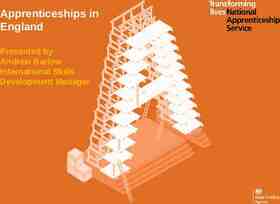Business Plan Template and Guide [Company Name] [Owner] [Contact
18 Slides1.94 MB

Business Plan Template and Guide [Company Name] [Owner] [Contact Information] [Date]

Table of Contents Industry Overview 3 Target Market 12 Executive Summary 4 Sales and Marketing 13 Products and Services 5 Pricing 14 Mission and Vision 6 Sales Forecast 15 Roles and Responsibilities 7 Budget 16 SWOT Analysis 8 Financials 18 Market Analysis 11 Looking Forward 20 2

Industry Overview Use this space to define what an interior designer does. Customize that definition based on the audience with which you’ll be sharing this business plan. For example, if the person or organization receiving this presentation has already invested in interior design businesses in the past, you can be more specific about the aspect of interior design in which your business will focus. If not, start slowly with a general introduction, avoid industry jargon and don’t make any assumptions about their knowledge of the industry. Tell your audience about the current status of the industry. Use data and analysis from respected sources like the National Kitchen Bath Association (NKBA). Don’t be misleading about any of the challenges facing the industry, but try to present those challenges as an opportunity rather than an obstacle. For example, if fewer new homes are being bought, don’t dwell on the lack of new home buyers employing designers. Instead, emphasize the number of potential customers remodeling their current homes. Back to Table of Contents Tip Keep your audience in mind: Highlight areas that match their specific interest, emphasize growth wherever possible and end the section with a note about their/your place in the industry's future. 3

Executive Summary Even though this section comes early in the presentation, it should be written after you’ve completed every other part. Begin with the elevator-speech description of your business: one or two sentences about what your business is and does. Then, move on to answer the following questions: What needs does your business meet? What differentiates your business from others? Who is your ideal customer? What do you expect from your business? If the purpose of the business plan is to raise capital, use this page to communicate how much investment you’re seeking, where it will be used and how it will make the business profitable. Back to Table of Contents Tip This will be one of the first pages a potential investor reads. It should grab their attention quickly and sustain it. That means being brief, but also informative and interesting. 4

Products and Services Begin this section by referring to the first question on the previous page: What needs does your business meet? What problem does it solve? Use this to help frame your business opportunity. Emphasize areas in which your design services will reduce consumer stress, save customers money and/or bring clients joy. Then, list the products and services you provide: All residential interior design services? Kitchen and bathroom design services? Commercial interior design services? Office design services? Will you provide merchandise sales? Will you provide consulting services? What about designing spaces in luxury vehicles such as yachts or private planes? Back to Table of Contents Tip Use this section to share differentiators, as well. What do you do that other businesses don’t? What’s unique about your services? 5

Mission and Vision What’s the difference between mission and vision? Well, a mission statement, usually a couple sentences long, expresses the core values and purpose of your business. It begins with a “to” phrase: to build, to create, to establish, etc. A vision statement is one sentence that expresses the ambition of your business and its longer-term goals. For example, the mission of your business might be to make the lives of your customers better by creating spaces for them that they use to the fullest potential. The vision of your business could be to become the region's most highly regarded interior design firm with a reputation for making everything – rooms, homes, lives - better. Back to Table of Contents Tip To this point in the presentation, you’ve laid out facts and provided some details. This is the place to be a little creative with your words. 6

Roles and Responsibilities Depending on the scale of your business, it may be useful to provide an overview of your company’s structure. Tie this section into your mission and vision statements. For example, “We understand the importance of building a business structure that will help us achieve our goals, and that’s why we will only hire qualified and creative employees who display an empathy for the customer above all else.” If your business already has staff, include what positions have been filled alongside positions that you will be looking to fill in the future (with timeframes beside these job titles), and include the responsibilities for each role. It might look something like this: Chief Executive Officer/Creative Director (filled): Currently filling all roles. Creating, communicating and implementing company mission and vision. Leading the development and implementation of the overall organization’s strategy. Project management for all jobs. Responsible for designing concepts for all designs. Tip Show your audience that you’ve not only thought about the future of your business, but that you’ve also prepared for the growth that the future will bring. Junior Interior Designer (Plan to hire in 3-6 months): Will alleviate client-facing responsibilities of CEO/Creative Director and act as sounding board for design concepts. Liaises with clients for discovery. Added support for smaller design concepts. Back to Table of Contents 7

SWOT Analysis In an ideal world, you’ll have hired an outside agency to perform a SWOT analysis, and you could share the results here. This can also be done yourself by being honest and analytical about your company’s Strengths, Weaknesses, Opportunities and Threats. Here are some examples of the type of information that should be shared: Strengths: Personal experience. Strengths Weaknesses Insert text here Insert text here Insert text here Insert text here Insert text here Insert text here Connections in community. Weaknesses: New business without a reputation. Lacking funds for proper promotion. Opportunities: Residents in region are turning to remodeling rather than buying new homes. Many former offices in region are converting to residential spaces. Insert text here Insert text here Threats: S W O T Economic conditions. Competition from more established design firms. Opportunities Back to Table of Contents Threats 8

Market Analysis Go into a little more detail on what you introduced in the industry overview page at the beginning. It’s okay to show off a little bit in this section: Let your audience know that you’re an expert when it comes to your market. Provide more regionally specific information here: How many design firms are already in operation? How much money is being spent on interior design in the region? Identify key local opportunities. Talk about current trends for interior designers and emphasize the importance of creativity when it comes to concepts. Again, NKBA is an excellent resource, especially if your business is going to focus on kitchen and bathrooms, but it’s not the only one. For any data you’re providing, ensure that the source is well-regarded and properly referenced. For example, “According to NKBA, single-family rental homes are going to drive kitchen and bath remodeling spends in 2023.” Back to Table of Contents Tip Check out the 2020 blog for analysis on what current trends and reports mean to interior designers in practical terms. 9

Target Market In this section, identify the main market segments your business is targeting and will be targeting in the future. List them here – construction companies, realtors, rental property owners, etc. – and provide any information you have or steps you’re taking to reach these markets, like networking events with realtors or joining community business associations. Be as specific as possible, and bring it back to the previous section to show that your targets match the analysis. This section should also answer the following questions: Is the market you’re targeting growing or shrinking? What percentage of the target market will you be able to reach and convert? What market share will you own in the next two to three years? Tip Analysis of competition is often laid out in a matrix that clearly shows what your business offers that competitors do not. In this part, you can also include a subsection that contrasts your company’s competition to the competitive advantage you offer. A competitor is any other business that sets out to solve the issue or answers the need that you’ll be mentioning in your executive summary. Follow that up with sound reasoning as to why your target market will choose your business over that competitor’s. Back to Table of Contents 10

Sales and Marketing In this section of the plan, tell your audience how you intend to promote your business, generate leads and drive traffic to your website. How will you earn the income that will allow your business to not just survive but thrive? You’ve already listed the services your business will be offering, you’ve proven yourself to be an expert in this specific market and you’ve identified who will form your customer base. Now, it’s time to connect all these things for your audience. List your marketing activities: Are you advertising on local radio? Are you paying for Google search? What about social media? Will you be making phone calls to contact leads? How do you intend to introduce your business to the region? And then, talk about your sales strategy: What is your overall approach? Do you intend to hire salespeople? Will they work on commission? Do you offer referral discounts? You may also want to incorporate a media or public relations strategy if you’re thinking of reaching out to trade publications or other outlets for potential coverage. Back to Table of Contents Tip Start this section with a key message to potential customers. It should express how you will communicate your competitive advantage to your market to convince them to pay for your services. 11

Pricing This is the section where you inform the audience of your pricing structure for different services. This can be somewhat challenging for an interior design business because pricing structures can range from per hour to fixed fees, and it can sometimes even be based on square footage of the space being designed. Then, list your available payment options, from online bank transfers and credit cards to PayPal and cash. Make sure everything you list here is acceptable to your bank. Mention any fees associated with the options. Back to Table of Contents Tip It’s generally a good practice to not restrict your business in terms of pricing structures, especially for a start-up. Embrace as many payment options as possible. 12

Sales Forecast You don’t need to get into the nitty gritty of your sales projections in this section, but you should inform your audience of your forecast for the next three to five years, and how you’ve come to those numbers. In addition to the market analysis you’ve already shown in the previous section, these figures should be based on the location of the business, comparisons to similar start-ups in the region and your current sales and leads. Back to Table of Contents Tip Be ambitious, but realistic. 13

Budget It’s now time to communicate a list of your start-up expenses. Of course, there are no universal figures for every start-up. The numbers will depend on a variety of factors from the scale at which you want to begin your business to the region where you’ll be paying for business licenses and insurance. This section should make it clear to investors (or anyone else to whom you might be showing your business plan) how much money it will take to launch your business or take it to the next level. Once you’ve created an itemized list of your expenses (see following example), share the source(s) of your current start-up capital. Is it personal investment? Are friends and family supporting the business? Have you secured or are you seeking a bank loan? If so, what is its status? Back to Table of Contents Tip The right kitchen and bathroom design software will help you win sales through beautiful renderings with real products, but it should also help you manage your business processes and customer interactions. Every subscription to 2020 Design Live includes access to 2020 Manager to keep your projects on track and your financial data all in one place for easy access and peace of mind. 14

START-UP COSTS Your Interior Design Company ITEMS Business Licenses/Permits/Fees Advertising/Marketing Salaries Rent/Lease Payments/Utilities Computer Equipment Design Software Insurance ESTIMATED START-UP BUDGET January 1, 2023 MONTHS COST/ MONTH ONE-TIME COST TOTAL COST 0 0 0 0 0 0 0 0 0 0 0 0 0 0 0 0 0 0 0 0 0 0

Financials You've just informed your audience of the current status of your business. Now it’s time to let them know where your business is going with a projected profit and loss model. This is a great way to understand and communicate when your new company is expected to begin turning a profit. Here you’ll compare and contrast the sales expectations and expenditures from the previous sections in an easy-to-understand chart. Then, you can see where you want and need to adjust to reach profitability. Use this page to introduce, highlight and summarize the data on the next slide. Back to Table of Contents Tip Remember that these are just projections for now, but when you start operations, you’ll want management software that meets the needs of your specific business. 2020 Manager gives you access to surveys, quotes and reports that provide automated insight into the behavior of your customers so you can better plan the future of your business. 16

PROJECTED PROFIT AND LOSS Your Design Company January 1, 2023 REVENUE JAN FEB MAR APR MAY JUN JUL AUG SEP OCT NOV DEC YTD Sales 0 0 0 0 0 0 0 0 0 0 0 0 0 Cost of Services 0 0 0 0 0 0 0 0 0 0 0 0 0 Gross Profit 0 0 0 0 0 0 0 0 0 0 0 0 0 EXPENSES JAN FEB MAR APR MAY JUN JUL AUG SEP OCT NOV DEC YTD Salaries 0 0 0 0 0 0 0 0 0 0 0 0 0 Rent 0 0 0 0 0 0 0 0 0 0 0 0 0 Software 0 0 0 0 0 0 0 0 0 0 0 0 0 Total Expenses 0 0 0 0 0 0 0 0 0 0 0 0 0 NET INCOME 0 0 0 0 0 0 0 0 0 0 0 0 0

Looking Forward Whether you’re creating a business plan for potential investors or to give yourself, as a prospective owner, a deeper understanding of what it will take to launch an interior design company, it’s important to prepare a final section that touches on longer-term plans. To a potential investor, this makes it clear that they’ll be partnering with someone who possesses vision and ambition. For your own benefit, it can bring a sense of clarity and focus for where you want your company to be in a matter of years. Begin this section with a line or two about your vision of the future and any big sky ideas. Do you want to see your business become the biggest interior design firm in the region? Do you want to become a national franchise? International? Once you’ve established your intent, list the business milestones, goals and objectives that will get you there. Mark expectations in terms of dates to complete and those that have already been completed. From checking your business name availability to recruiting employees, list it all here. For example: Application for business license and permit: Completed Drafting of contract templates: April 2023 Design of business logo: Completed Leasing an office space: June 2023 Establish relationships with key vendors: Ongoing Back to Table of Contents Tip A good business plan should tell a story. While it will have more facts and figures than a typical narrative, it should flow together to make the audience feel as though they’ve journeyed with you to the point where you can launch with their support. This final page in the document is like the To Be Continued title at the end of a gripping movie with more story to tell. 18






